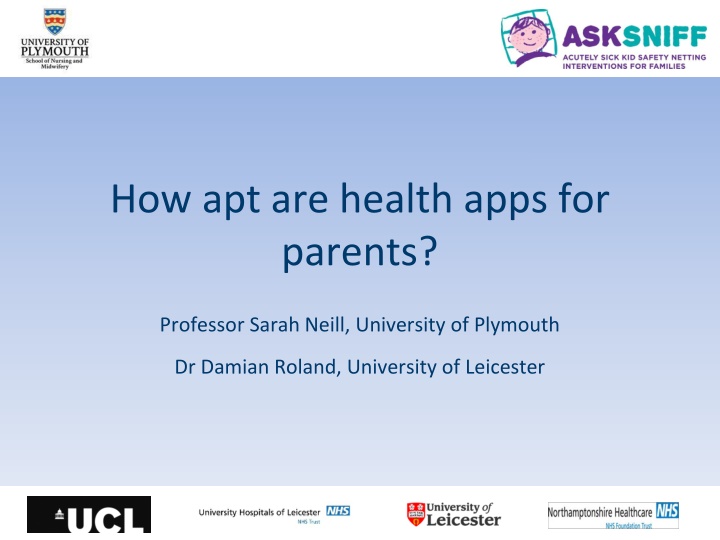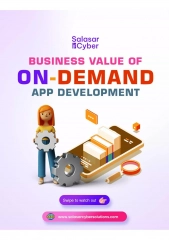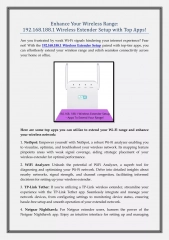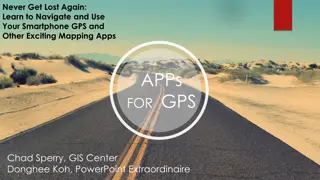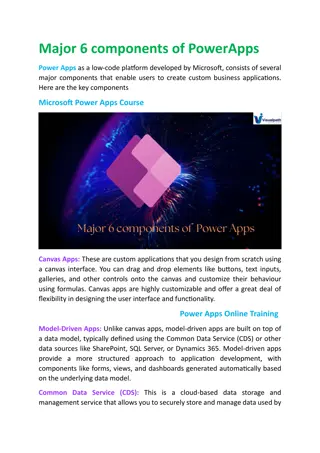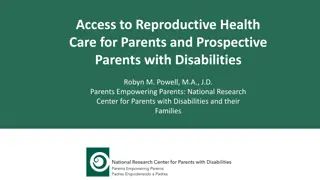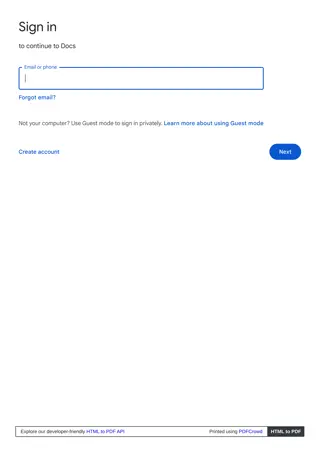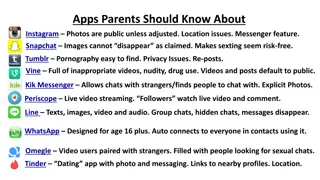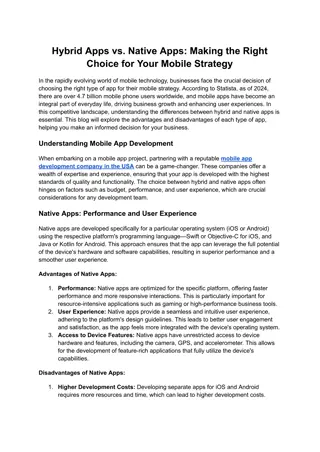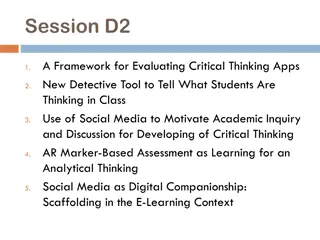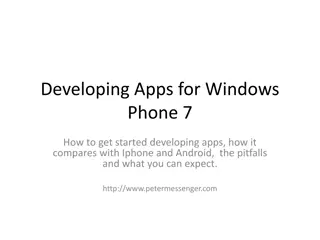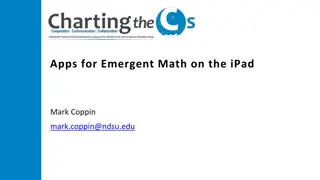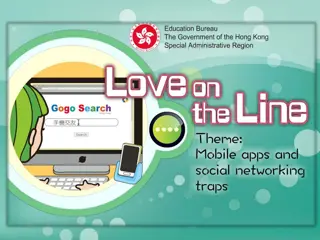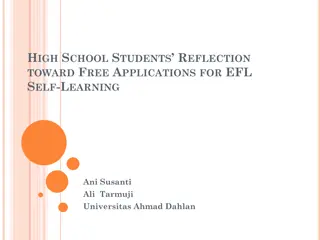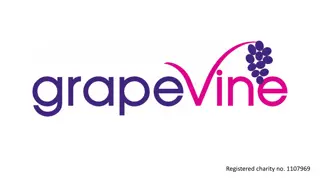Effectiveness of Health Apps for Parents
Health apps designed for parents play a crucial role in providing information and guidance for managing the health of their children. Professor Sarah Neill and Dr. Damian Roland from University of Plymouth and University of Leicester explore the development and impact of such apps, focusing on safety netting, symptom checking, and empowering parents with essential healthcare information.
Download Presentation

Please find below an Image/Link to download the presentation.
The content on the website is provided AS IS for your information and personal use only. It may not be sold, licensed, or shared on other websites without obtaining consent from the author.If you encounter any issues during the download, it is possible that the publisher has removed the file from their server.
You are allowed to download the files provided on this website for personal or commercial use, subject to the condition that they are used lawfully. All files are the property of their respective owners.
The content on the website is provided AS IS for your information and personal use only. It may not be sold, licensed, or shared on other websites without obtaining consent from the author.
E N D
Presentation Transcript
How apt are health apps for parents? Professor Sarah Neill, University of Plymouth Dr Damian Roland, University of Leicester
Context iPoorly: Child Symptom Checker app Spotting the sick child for parents of children under 5 years of age From the Safety Netting Collaborative s ASK SNIFF research programme www.asksniff.org.uk Professor Sarah Neill, Dr Damian Roland, Professor Matthew Thompson, Sue Palmer-Hill, Natasha Bayes, Parent Panel Leads Laura Mullins & Tracy Turner, Dr Alison Tavar , Professor Monica Lakhanpaul.
Traditional safety netting during consultations Safety netting should include: verbal and/or written information on warning symptoms, how & when to access further healthcare http://www.integralalive.com/2012/07/06/alethic-integral- Arranging follow-up appointments retreat-a-personal-journey-and-journal-part-two/ Liaison with other healthcare professionals (Roland et al 2013) Our aim is to extend safety netting to empower parents with safety netting to use at home before and after consultations.
2011 ASK Safety-net Review & Analysis Systematic review: Effectiveness of methods for providing information on when to seek medical care for parents of acutely sick children ASK SaRA 2012 ASK Parent Information Project Qualitative study: Exploring parent and HCP use of information resources during decision making in acute childhood illness at home 2013 ASK PIP 2014 ASK Safety-netting Intervention Development Development of the content & delivery methods for a Standardized Safety Netting Intervention tool ASK VIC ASK Video Capture Spotting the sick child video capture of children presenting to Accident & Emergency 2015 ASK SID 2016 ASK Parent & Professional Education and Training resource 1 Scripting the content for the tool with parent and professional review 2017 ASK PETra 1 Community of practice Future ASK Parent & Professional Education and Training resource 2 Co-design of the iPoorly app with parents & professionals, inc. technical development and testing ASK SNIFF Tool: iPoorly app and training resource ASK PETra 2
We have Evidenced parent and professional reviewed content for the iPoorly app, with embedded explanatory video. Content focussed on commonest symptoms: body temperature, breathing difficulty, dehydration, vomiting, diarrhoea and rash. More can be added later. Age specific symptom information up to 5 years of age. Can be extended later.
We dont have. Evidence concerning: What apps professionals already use with parents of young children What motivates professionals to use apps with parents of young children How health apps should be designed to engage professionals to use them The COM-B system (Michie et al 2011) How to design the app so that they continue to be used with parents by professionals
What apps do you use? And Why? Please write the names of the apps you like in the chat. What do you like / dislike about the apps you use? Add to the chat or just shout out Are these for parents to use before or after consultations?
What influences how you use apps with parents? In your break out rooms please can you consider: Capability: Physical, psychological Opportunity: Physical, social Motivation: reflective (beliefs), automatic (routines/habits) Please make sure you identify someone in your group to record and feedback your key points in each of these three areas.
How should health apps be designed to engage professionals to use them? Design/Presentation Delivery/Access (to parents before or after consultation?) Advertising Open discussion so please feel free to contribute in the chat as well as verbally.
Thank you If you are interested in working with us do get in touch. sarah.neill@plymouth.ac.uk m.lakhanpaul@ucl.ac.uk dr98@le.ac.uk
